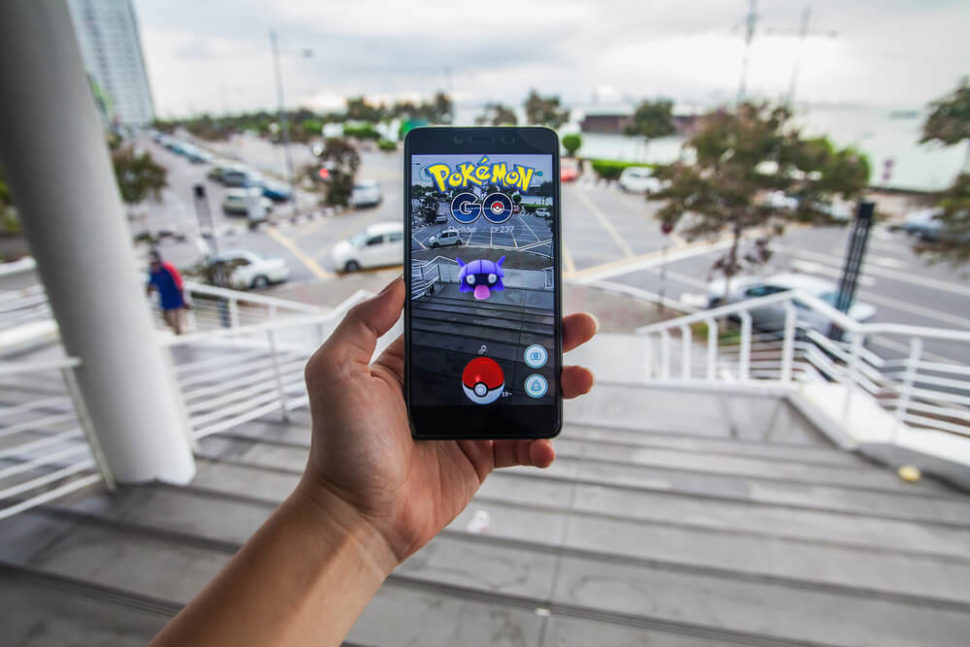Location-based games enjoyed a exploded in popularity during 2016. Here’s a brief look at how location-based AR games choose their locations, and in doing so, influence our culture.
Sometimes the distinction between AR and VR is hard to explain. VR is straightforward: control your empirical senses to immerse yourself in a virtual world. AR is a little different. With AR, your senses are manipulated by an overlay on top of the physical world. Location-based games are a great example.
Pokemon Go was an instant hit, but it is far from the only AR game on the mobile market. Similar games like Google’s Ingress are also overlaying their experience on the world around us, and with the success of Pokemon Go, it is a safe bet that other developers will try to get some of the AR game fire from Pokemon’s mountaintop.
#location-based #AR #games can change the significance of physical locations.Click To TweetAR games tend to use a method called geocaching to interact with the physical world. With geocaching, a GPS navigation system is used to find hidden (or not so hidden) locations to interact with. The name comes from an outdoor activity where people use geocaching apps on their mobile devices to go on player-made ‘treasure hunts,’ but in more mainstream AR games the navigation points are set by the game.
Typically, the nav points are placed in public locations that hold cultural or historical importance, but that raises an important question: How does the game determine what areas are culturally or historically significant?
How Location-based Games Gather Data
We can thank Niantic Labs for giving location-based gaming its big break with both Pokemon Go and Ingress.
In both games, geographical locations play a major role for players. The sites lie in areas both urban and rural, and for the most part, they are decided upon by using data from Google, presumably gathered from the data available from Google Maps. So, if their data comes from Google Maps, then most of the locations are based around what places Google deems important.
I remember looking outside the balcony of my tiny apartment to see people with their phone in one hand and a battery pack in the other, walking around the compound and striking up conversations with others doing the same.
At the public park where I run, adults and kids alike were helping each other play the game, discussing its nuance, and having good clean fun. My workouts have never been so pleasant.
AR games have a unique draw, and they cause people to come together and create the kind of cultural experiences that they will tell stories about when they are older. That means that these games have a certain kind of power over society; not power in the traditional, hegemonic sense of the word, but the power to change how people see and interact with places that are important to the heritage of their local area. “I would argue that it is important to understand these games because they shape the way we perceive what counts as important heritage locations and what does not,” says Buccitelli, and he has a point.
“I would argue that it is important to understand these games because they shape the way we perceive what counts as important heritage locations and what does not,” says Professor Anthony Buccitelli of Penn State Harrisburg, and he has a point.
After all, if a place associated with the Pokemon Go gym or Ingress portal rather than its historical or cultural significance, how long before people forget that significance?
Introducing the Human Element
Penn State Harrisburg saw a massive influx of AR gamers on its campus during 2016, and they weren’t alone. Public institutions everywhere were swarmed with people looking for virtual interactions with important landmarks, but Penn State was lucky enough to have a community that wanted their virtual world to have more of the culture found in its real-world counterpart.
In Ingress, players can submit petitions to turn landmarks they deem important to Google in the hopes of adding them to the game as ‘portals,’ a feature that is likely to deepen the immersion of the players. According to Professor Anthony Buccitelli at Penn State Harrisburg, “…the portals that did exist reflected the way in which Google conceived of what counted as heritage locations, Buccitelli said, a definition that was influenced by legal and commercial concerns rather than an understanding of local cultures.”
For Ingress players at Penn State, sites with historical markers or art installations are accepted to become portals, as are popular public gathering spaces. They feed new data into Google’s algorithms by doing this, telling Google what places are important rather than requiring them to make their judgment calls based on information extrapolated from what they could get out of Google Maps.
I’ve written before on how Google is shaping our perceptions with its search engine algorithms, and AR location-based games give another perspective of how their algorithms can unintentionally guide how people think or what they deem significant. In this case, users have a countermeasure from that kind of automatic influence. User participation in games like Ingress can act as a form of checks and balances to help reinject the human element into games that use location-based algorithms, or more accurately, reflect human perceptions about what kind of places or things are culturally significant.
Mapping algorithms are tools, and just like any tool, they only have an effect when we use them. If our purpose in playing location-based games is to have fun, cultural significance is generated.
This is especially true if those games push people to interact. As we progress into the future, it will be substantial to remember how algorithms are supposed to guess at what places are culturally significant.
If we do, perhaps we can avoid having our culture influenced by machine intelligence without our input.



















Enter the world of Project Z… a free-to-play, location-based Zombie Game for iOS devices.
https://itunes.apple.com/us/app/project-z-location-based-zombie-game/id1225040921?ls=1&mt=8
Survive the Zombie Apocalypse and retrieve Items inside Backpacks, that once belonged to Real Players.
As you walk around your neighbourhood, your iPhone will display a Map of Real-Time positions of all Zombies, Players and Backpacks.
All Players will see the same Zombies and Backpacks, and Players can identify each other playing Project Z…
You have to stay alert at all times and avoid Zombies at all cost. If they spot you, they will follow you. If they get too close, they will bite you and you will turn into a Zombie…